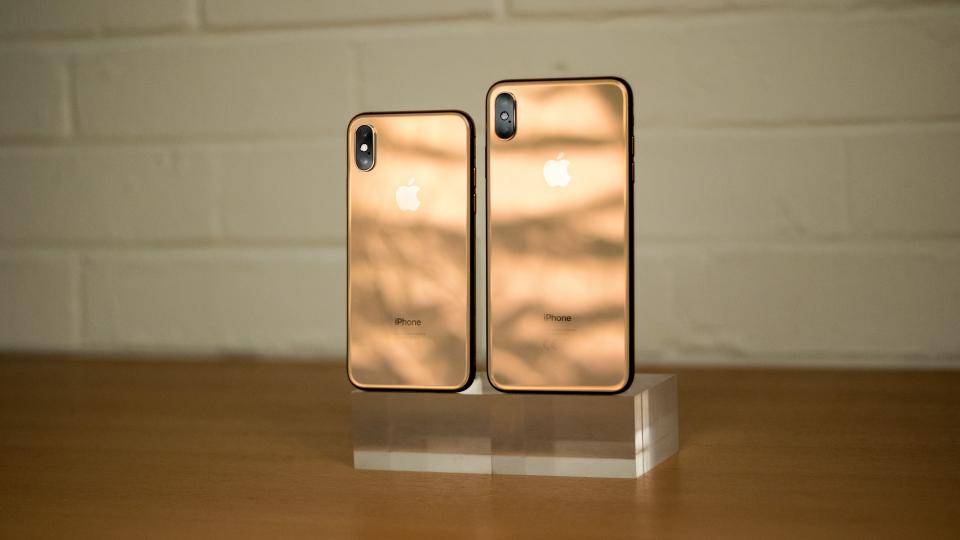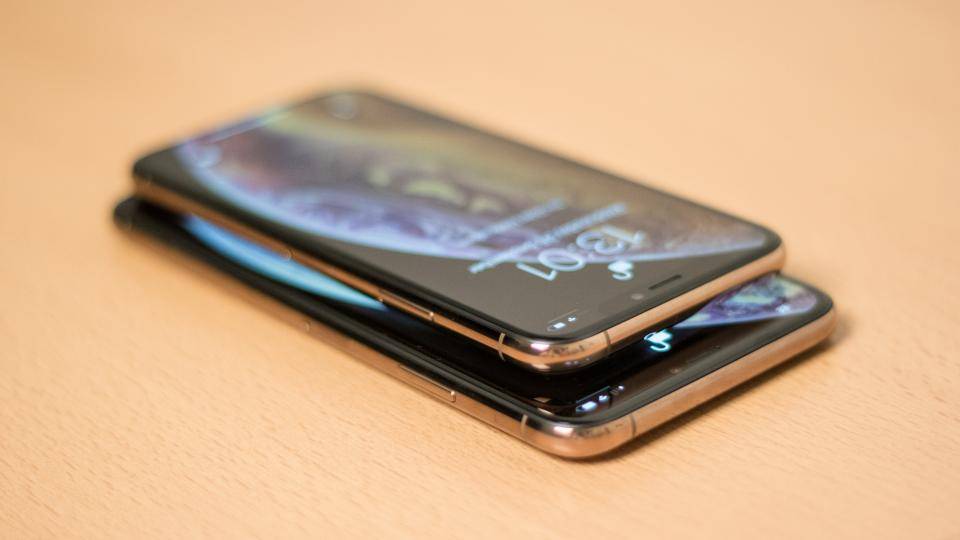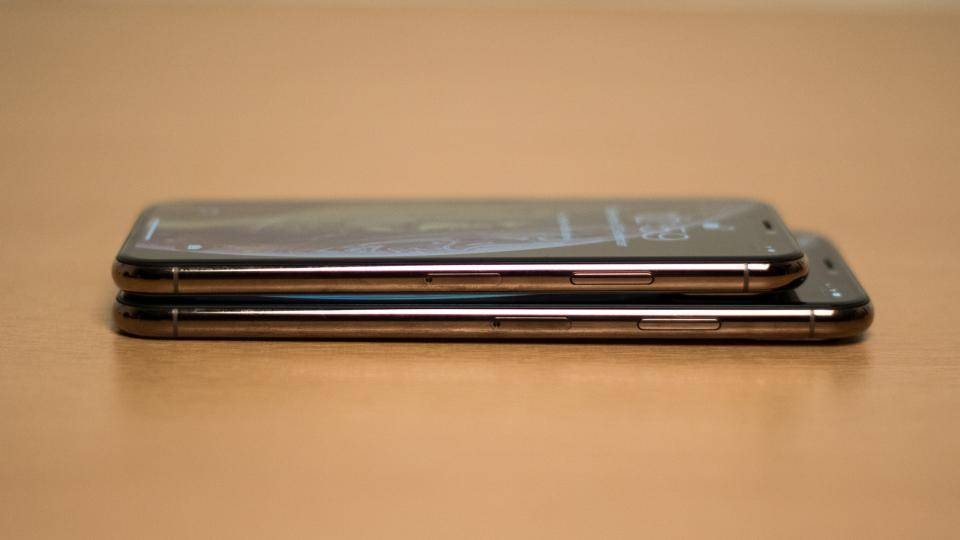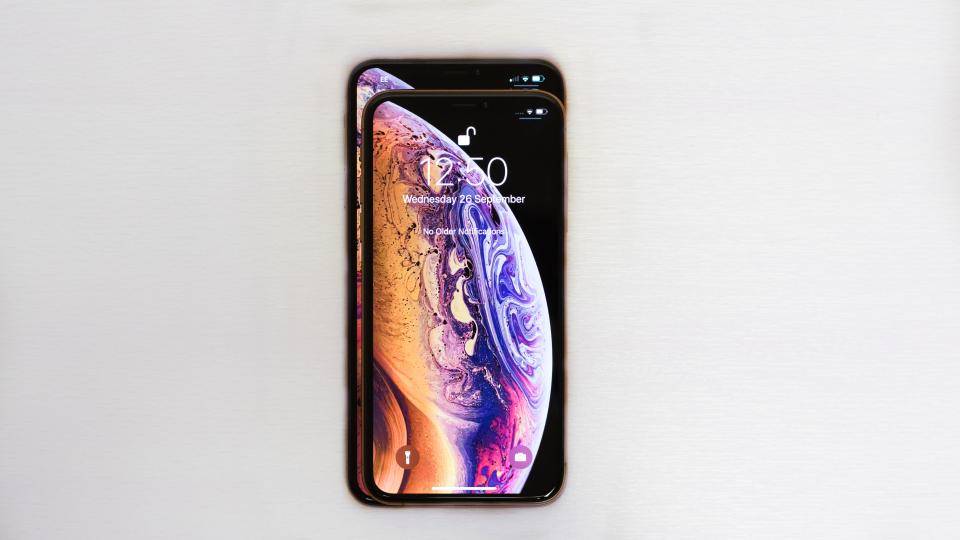iPhone 11, iPhone 11 Pro and iPhone 11 Pro Max unveiled: With the unveiling of Apple's latest iPhones on 10 September, it's now no longer possible to buy the iPhone Xs on Apple's website. And unless you're able to find a really good deal it's no longer advisable to purchase the phone anywhere else, either.
That's because, despite costing only £50 more, the new Apple iPhone 11 Pro is a phone with more features, an extra ultra-wide-angle camera, faster performance and, if Apple's claims are to be believed, hugely improved battery life, with four hours longer per charge than the older phone.
You can register your interest in the phone at Carphone Warehouse or pre-order from the Apple Store online and, if you want to learn more about the new phones, read our in-depth previews at the links below:
Apple iPhone 11 preview
Apple iPhone 11 Pro preview
Apple iPhone 11 Pro Max preview
Our original review continues below:
The Apple iPhone Xs can be summed up in one fairly brief sentence: it’s basically the same phone as the Apple iPhone Xs Max, but with a smaller screen and a smaller battery.
That’s pretty much all you need to know, although to get the full picture you’d have to go away, read my iPhone Xs Max review, and then come here to look at the pretty pictures. I’m not going to leave it at just that, of course, because you’ve come here to read a review of the iPhone Xs and that’s exactly what you’re going to get.
READ NEXT: Apple iPhone Xs Max review
Apple iPhone Xs review: What you need to know
Let’s take it from the top down. The Apple iPhone Xs is one of three phones launched by Apple in 2018, and it sits in the middle of the range in terms of features, performance and price. At the “bottom” of the 2018 iPhone range is the iPhone XR, which is the cheapest iPhone, then you have this phone – the iPhone Xs – while at the top of the range is the iPhone Xs Max.
To look at, the iPhone Xs is almost identical to the 2017 iPhone X, which Apple has now retired. It has the same front-filling AMOLED 5.8in display, the same dimensions and the very same notch at the top of the screen. It’s marginally heavier but that’s not noticeable.

In fact, you’ll only be able to tell the difference between the iPhone X and iPhone Xs if a) you look really closely at the positioning of the plastic antenna bands, which have moved or b) have the new Gold version, which looks very lovely indeed, by the way.
All the key changes to the iPhone Xs are invisible to the naked eye. There’s an improved camera, faster 4G connectivity, better battery life and quicker performance, all of which I’ll go into in greater detail further down this review.
Apple iPhone Xs review: Price and competition
One thing that doesn’t change from the iPhone X to the iPhone Xs, though, is the price. The version with 64GB of storage is £999, with the cost rising to £1,149 for the 256GB iPhone Xs and £1,349 for the 512GB iPhone Xs.
That makes it more expensive than all its Android rivals, even at its base price. It’s £100 more expensive than the Samsung Galaxy Note 9 , around £200 more expensive than the Samsung Galaxy S9+ and Huawei P20 Pro , and more than double the price of the incredible OnePlus 6 .
It’s also £250 pricier than the forthcoming iPhone XR – which also happens to have a larger display – putting the iPhone Xs in a somewhat awkward position. It’s “only” £100 cheaper than the iPhone Xs Max, which has a considerably larger screen and all the same features, yet it’s still more expensive than most of the opposition.
Best Apple iPhone Xs contract and SIM-free deals:
Apple iPhone Xs review: Design and key features
That’s not to say this the iPhone Xs is a bad phone. Just that there are other equally competent phones available at significantly lower cost. Still, for those who just want an iPhone, the Xs represents a decent step over the iPhone X in terms of features and performance, if not design.
Indeed, the only physical difference between the X and the Xs is the positioning of the plastic antenna bands around the edge. On the iPhone X these were positioned on each long edge at the top and bottom of the phone; on the iPhone Xs there are an extra two bands, one on the top edge towards the right-hand side and the other on the bottom towards the left-hand side.

Most won’t notice the difference but, for anyone who values symmetry, the bottom edge of the iPhone now sports a distinctly lopsided look, with three drilled holes to the left of the Lightning port and six to the right. It’s also clad in a slightly tougher, more crack- and shatter-resistant glass, so Apple says, on the front and back.
Otherwise, it measures and weighs pretty much the same as the iPhone X, with the extra bonus of being a touch more water-resistant. It’s still encircled with shiny, colour-matched “surgical grade” stainless steel, just in case you fancy doing a bit of open-heart surgery with it. And the screen still fills most of the front of the device, with a slim black bezel bordering it and the notch housing the phone’s “True Depth” and selfie cameras eating into your screen real estate at the top.
Alas, there’s no return to the fingerprint reader this year; more irritatingly, though, Apple hasn’t improved the mechanics for unlocking the phone in iOS 12. You still can’t simply look at the phone to unlock it straight to the homescreen; an extra upward swipe is required, which seems wholly unnecessary.

Apple iPhone Xs review: Display
As with the iPhone X, the 5.8in display is excellent. It uses AMOLED technology, so each of the onscreen pixels has its own light source. This translates to perfect, inky black level response and essentially perfect contrast.
The screen’s colour reproduction is superb, too, striking a balance between eye-popping saturation and colour accuracy. In my technical testing with a colorimeter, it reached 96.1% coverage of the sRGB colour gamut in the browser, and it peaked at 668cd/m2 brightness (166cd/m2 up on the iPhone X). The latter is a particularly impressive number for an AMOLED screen, ensuring the screen is readable in most conditions, even really bright sunshine.
The numbers might not mean an awful lot to you, but the fact the display has full support for HDR10 and Dolby Vision standards might well do. It won’t support these standards to the letter of the law, particularly when it comes to peak brightness, but I can report that videos of both types on Netflix and on YouTube look absolutely superb. Colours seem to leap from the surface of the screen, and highlights glint and gleam in an amazingly realistic fashion.

In short, the iPhone’s display is absolutely brilliant. It still has Apple’s excellent True Tone colour correction, which adapts the white balance of what’s shown on screen to the ambient light, and Night Shift, which reduces blue light. The one irritation, though, is that Apple has moved the automatic brightness toggle switch from the main settings to the Accessibility menu. It clearly doesn’t want its customers disabling this option and negatively impacting battery life.
Apple iPhone Xs review: Performance
The performance of the iPhone Xs is just as impressive as its display quality. As usual, Apple’s new mobile chip, the A12 Bionic, beats all comers in the benchmarks. It’s faster than last year’s flagship iPhone and this year’s fastest Android phones, and this applies to graphics- and CPU-intensive operation.
As usual, you won’t see frame rates faster than 60fps in games because the phone’s 60Hz refresh rate caps it at that rate. But the offscreen GFXBench result shows the iPhone Xs does offer a performance boost over last year’s model – and more performance per pound than any other smartphone on the market.
Do you need that performance? Probably not. There’s still nothing that phases the iPhone X, let alone the iPhone Xs, but it should ensure that, as Apple updates its software in the years to come, that it’s more resistant to slowdown. Fingers crossed.
More important than raw performance numbers these days is battery life, and the new chip – built using more efficient 7nm fabrication techniques – helps give the smaller iPhone Xs a much-needed boost.
It’s still not brilliant, lasting 12hrs 45mins in our video-rundown test. That puts it behind the Xs Max, the Samsung Galaxy S9, the Huawei P20 Pro and the OnePlus 6. But it’s considerably longer-lasting than the 2017 iPhone X. The problem for Apple is that as other manufacturers catch up and start producing their own 7nm-based phones, those gaps are likely to get larger once more.
Apple iPhone Xs review: Camera
You don’t choose the iPhone Xs over the Xs Max if you want better battery life, then, but at least there’s no difference between the two cameras if you do opt for the cheaper iPhone.
That means, on the iPhone Xs, you get a pair of 12-megapixel cameras on the rear. One is wide-angle and the other a 2x telephoto, both optically stabilised, with phase-detect autofocus and accompanied by a quad-LED flash. The primary camera has a large sensor with 1.4um pixels and a brighter f/1.8 aperture, while the secondary camera has a smaller sensor with 1um pixels and a dimmer f/2.4 aperture.
You can shoot stabilised 4K video with the rear cameras at 60fps, and the larger sensor on the primary camera means the phone can capture greater dynamic range than the iPhone X. Not that the X was bad: before the new iPhones came along, it was the best video camera in any smartphone. But the new phones are better, capturing video footage with even more detail.
Facing the front, meanwhile, we have a 7-megapixel selfie camera with an aperture of f/2.2 and the ability to apply video stabilisation, which the iPhone X wasn’t able to do. This year’s front-facing camera can also record its 1080p footage at 60fps, up from 30fps.
In terms of raw quality, all the same judgements apply to the iPhone Xs as to the iPhone Xs Max. It’s better, but only slightly. Photos in good light have a touch more punch to them, a little more detail and texture. It’s very slightly better in low light, too.
The iPhone Xs still isn’t as good as the Huawei P20 Pro for stills capture. That’s in the main to the P20 Pro’s impressive 40-megapixel primary camera and clever triple-camera setup, which delivers almost lossless zoom at 3x and 5x magnifications.
As I’ve already mentioned, video capture is insanely good, but it’s not just the detail, frame rate and stabilisation that’s impressive. The iPhone Xs’ camera also adapts more smoothly and quickly to changes in light. If you point the iPhone X at a shadowy area, then pan quickly to an area dominated by bright sky, you’ll see the camera adjusting. In the Xs, that adjustment is barely noticeable.
Feeding into all this are two key changes in the processing of photos. First, the iPhone’s HDR algorithm has received a boost. Now dubbed Smart HDR, this will capture eight frames instead of four at the point when you hit the shutter button. This helps the camera capture better images in tricky light – backlit portraits, for instance.
There’s improved portrait photography this time around, too. Instead of deciding for you how much blur to apply in the background, you get the chance to adjust it afterwards. As ever with this sort of photo, it looks a touch unnatural, certainly when compared with the real thing. Get everything right, though, and the results can look quite convincing.
Apple iPhone Xs review: Software
Of course one of the other, and fairly major, new features in the iPhone Xs is iOS 12. I won’t detail everything that’s new here, because I’d be duplicating what’s written over on our iOS 12 summary .
Suffice it to say, though, that a few highlights are worth a mention. I like the new Screen Time feature, which lets you keep on top of your smartphone use or abuse. The new Shortcuts apps is intriguing as well, adding an IFTTT-like level of automation to the iPhone, and allowing users to run macros and add shortcut icons to the desktop or shortcut phrases to Siri.
Apple iPhone Xs review: Verdict
The Apple iPhone Xs, just like the Xs Max, is a fabulous smartphone. If you’re firmly an iPhone fan but prefer a smaller screen, then you won’t be disappointed.
It has much better battery life than the iPhone X, a better camera with better portrait photos, HDR capabilities and video, and it’s a faster performer too. If you’re coming from an iPhone 7 or a 6s, it’s an even greater step forward.
If I had the money, though, and was going to make the choice between this and the iPhone Xs Max, it would be the latter every time. It’s expensive, yes, but not THAT much more expensive. If you’re going to spend this much on a phone, you might as well go all out. What’s £100 between friends, after all?

